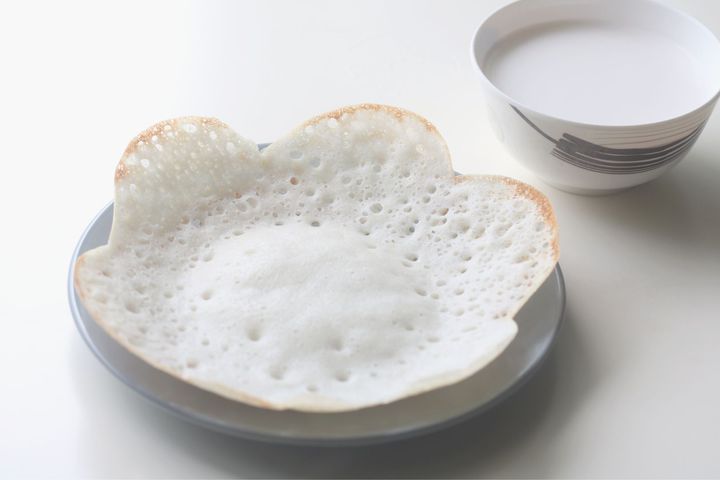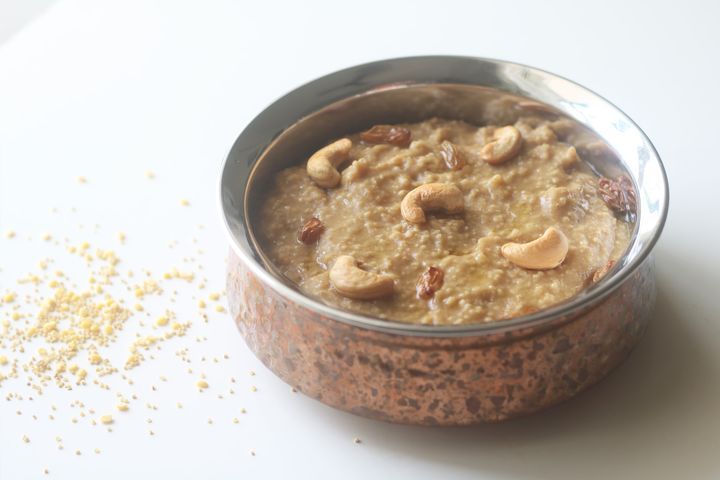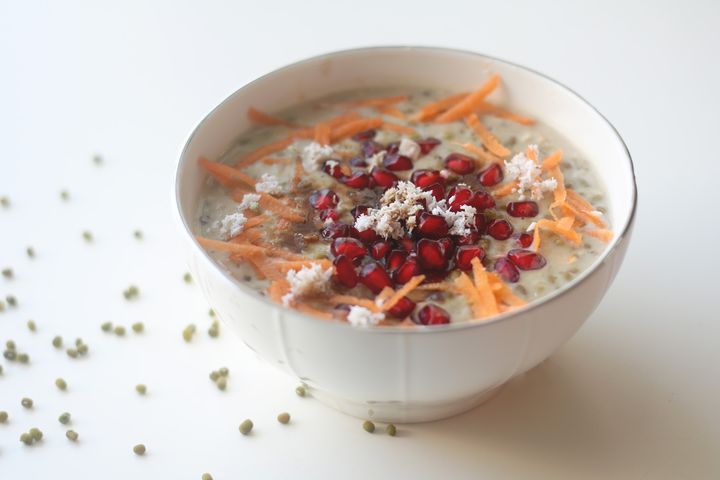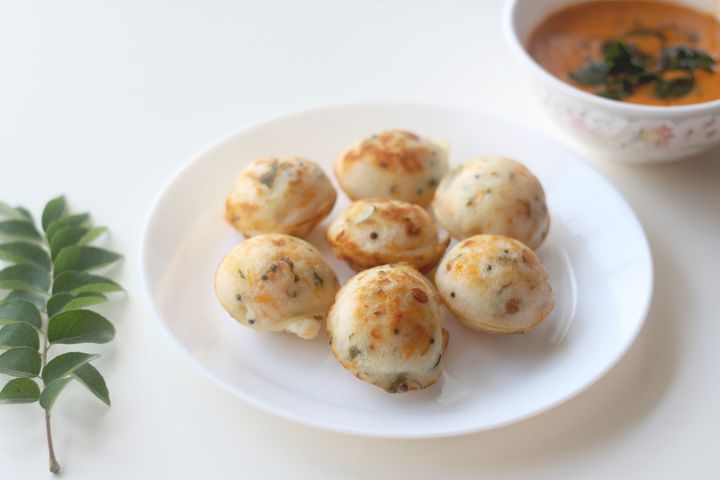Ragi Paal Kozhukattai
Ragi Paal Kozhukattai - A Nutritious Twist to a Traditional Delight!
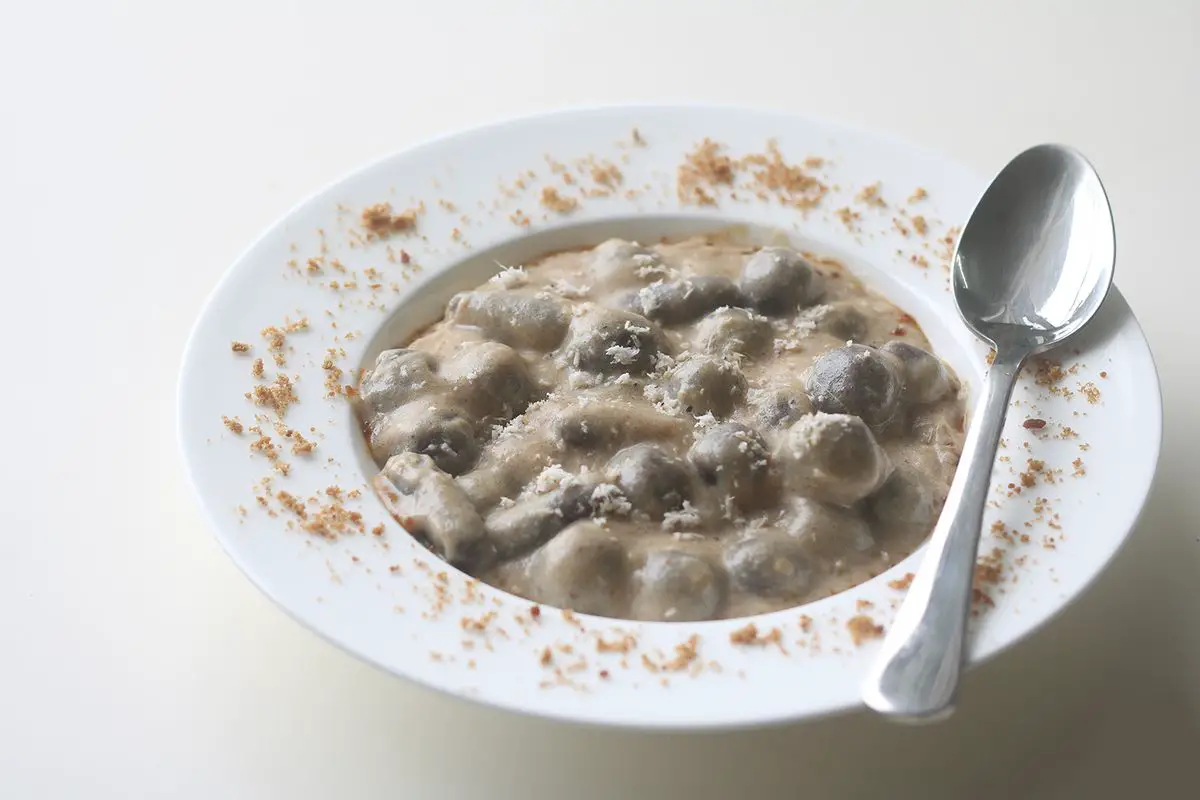
In South Indian households, Paal Kozhukattai has become a beloved dish made with rice and milk. However, let's take a trip back to tradition and discover an authentic recipe that adds a healthy twist to this delightful treat - Ragi Paal Kozhukattai!
In this post, we will be exploring the unique and delicious recipe for Ragi Paal Kozhukattai. This South Indian dish is made with ragi flour, milk, jaggery, and a blend of aromatic spices, creating a delightful treat that is perfect for any time of day. Let's dive into the details of this special recipe and learn how to make it at home.
What Is Ragi Paal Kozhukattai?
- Ragi Paal Kozhukattai is a traditional South Indian dish that combines the nuttiness of ragi flour with the creaminess of milk and the sweetness of jaggery. This unique dish is flavored with cardamom, coconut, and dry ginger, giving it a delightful aroma and taste.
- The combination of succulent main ingredients with Indian spices and unique seasoning makes Ragi Paal Kozhukattai a delightful and wholesome treat for all occasions.
Why You'll Love Ragi Paal Kozhukattai?
- Deliciously Healthy Texture: Ragi paal kozhukattai offers a unique texture that is both soft and creamy, making it a delightful treat for your taste buds. The combination of ragi flour, milk, and coconut creates a comforting and indulgent texture that you'll love.
- Rich in Nutrients: Ragi, also known as finger millet, is a nutrient-dense grain that is packed with essential vitamins, minerals, and fiber. By incorporating ragi flour into this recipe, you are adding a healthy dose of nutrition to your diet, making it a guilt-free indulgence.
- Gluten-Free Alternative: For those with gluten sensitivities or celiac disease, ragi paal kozhukattai is a wonderful gluten-free alternative to traditional desserts. It allows you to enjoy a delicious treat without worrying about any gluten-related issues.
- Good Source of Calcium: The inclusion of milk in this recipe not only enhances the creamy texture but also provides a good source of calcium. Calcium is essential for maintaining strong bones and teeth, making this dessert a wholesome choice for your overall health.
- Balances Blood Sugar Levels: Ragi flour has a low glycemic index, which means it helps in regulating blood sugar levels. This makes ragi paal kozhukattai a suitable dessert option for those looking to manage their blood sugar levels effectively.
- Filling and Satisfying: Thanks to the combination of ragi flour and milk, ragi paal kozhukattai is a filling and satisfying dessert that will keep you feeling full and content. This makes it an ideal choice for a wholesome and fulfilling sweet treat.
By emphasizing the creamy texture and highlighting the important health benefits of ragi paal kozhukattai, you'll find yourself appreciating this delectable dessert even more. So, give this recipe a try and treat yourself to a delightful and nourishing indulgence.
Ingredients for Ragi Paal Kozhukattai
- Ragi flour: Ragi flour is the main ingredient in this recipe and adds a unique nutty flavor and a hint of sweetness to the dish.
- Milk: Milk adds a creamy texture and a rich taste to the dish, providing a comforting and familiar flavor.
- Chopped coconut: Chopped coconut adds a subtle sweetness and a chewy texture, complementing the ragi flour and milk.
- Cardamoms: Cardamoms contribute a warm, floral, and slightly citrusy flavor, elevating the overall taste of the dish.
- Powdered jaggery: Powdered jaggery brings a natural sweetness and caramel-like flavor, adding depth to the dish.

How To Make Ragi Paal Kozhukattai?
Making Ragi Paal Kozhukattai is a delightful process that results in a tasty and nutritious dish. Follow these steps for a flavorful experience:
- Begin by preparing the ragi dough by mixing ragi flour, salt, and hot boiling water. Knead the dough until it forms a firm texture and then add oil to prevent it from drying.
- Once the dough has cooled, roll it into small balls or cylinders and set them aside.
- Steam the ragi balls in an oiled idli plate for approximately 7 minutes or until they are fully cooked.
- In a pan, heat water and milk and bring it to a boil. Add the steamed ragi balls and cook for an additional two minutes.
- Mix in the powdered jaggery, rice sauce, ground coconut and cardamom mixture, ginger powder, and ghee. Stir continuously until the mixture thickens over low heat.
- Once everything is well mixed, serve the Ragi Paal Kozhukattai in bowls.
Following these steps will ensure a delicious and satisfying Ragi Paal Kozhukattai.
Serving Suggestions
- Fresh Fruits: Serve with a side of fresh fruits like sliced mangoes or bananas to balance out the sweetness of the dish. The refreshing taste of fruits complements the rich flavors of Paal Kozhukattai.
- Nuts and Seeds: Consider serving with a sprinkle of toasted nuts and seeds such as cashews, almonds for added texture and a nutty flavor. This adds a delightful crunch to the meal.
Tips for Making Ragi Paal Kozhukattai
- Preparation Duration: Be mindful of the preparation duration for this recipe, as it involves several steps such as kneading the dough, steaming the balls, and preparing the milk mixture. Plan accordingly to allow enough time for each step to ensure a smooth cooking process.
- Cooking Techniques: When steaming the ragi balls, ensure that they are cooked through by checking their texture. The steaming time may vary depending on the size of the balls, so keep an eye on them to avoid overcooking. Additionally, when thickening the rice sauce, stir continuously over low heat to prevent lumps and achieve a smooth consistency.
- Importance of Garnishing: Garnishing plays a crucial role in the presentation of Ragi Paal Kozhukattai. Sprinkle some powdered jaggery, coconut, and a pinch of cardamom on top before serving to enhance the visual appeal and elevate the overall dining experience.
- Adjusting the Texture: After the dish cools down, it may thicken. If this happens, simply add some milk and adjust the sugar accordingly to achieve the desired consistency and sweetness level.
- Balancing Flavors: When adding the powdered jaggery, taste the mixture and adjust the sweetness according to your preference. It's important to balance the flavors by gradually adding the jaggery and adjusting the quantity to suit your taste buds.
- Serving Suggestion: For a delightful serving experience, consider presenting the Ragi Paal Kozhukattai in artistic bowls or traditional Indian serveware to add an extra touch of authenticity and charm to the dish.
By following these practical tips, you can master the art of making delicious Ragi Paal Kozhukattai with ease and create a delightful culinary experience for yourself and your loved ones.
Variations for Ragi Paal Kozhukattai
- Nutty Twist: For a nuttier flavor, try adding chopped almonds or pistachios to the mixture before steaming the ragi balls. The added crunch and flavor will take this dish to the next level.
- Fruity Delight: Incorporate some diced fruit, such as bananas or mangoes, into the ragi balls before steaming. This will add a hint of natural sweetness and a burst of freshness to the kozhukattai.
- Creamy Coconut: Instead of adding chopped coconut, try using coconut milk in the milk mixture for a creamier texture and a richer coconut flavor.
- Chocolate Indulgence: To satisfy your sweet tooth, incorporate some cocoa powder into the ragi flour when making the dough. This will result in a decadent chocolate twist to the traditional kozhukattai.
How to Store Ragi Paal Kozhukattai
- Storing the Ragi Balls: After cooking the ragi balls, allow them to cool completely. Once cooled, place them in an airtight container and store in the refrigerator. This will help maintain their freshness and prevent them from drying out.
- Storing the Ground Coconut and Cardamom Mixture: If you have any leftover ground coconut and cardamom mixture, store it in an airtight container and refrigerate. Use it within a few days to ensure it remains fresh and flavorful.
- Storing the Jaggery: To store the powdered jaggery, transfer it to a clean, dry container with a tight-fitting lid. Keep it in a cool, dark place to prevent it from hardening. Check on it periodically to make sure it remains free from any moisture.
- Storing the Final Dish: If you have any leftover ragi paal kozhukattai, store it in an airtight container in the refrigerator. When ready to enjoy again, reheat it gently on the stovetop or in the microwave, adding a splash of milk to adjust the consistency if needed.
Frequently Asked Questions (FAQs)
Can I use any other type of flour instead of ragi flour?
- Yes, you can substitute ragi flour with other gluten-free flours like almond flour or sorghum flour. However, the taste and texture may vary.
How do I adjust the sweetness of the ragi paal kozhukattai?
- You can adjust the sweetness by adding more or less powdered jaggery according to your preference. Taste the mixture before adding jaggery to ensure it's sweet enough for your liking.
Can I make the ragi balls in advance and store them?
- Yes, you can make the ragi balls in advance and store them in the refrigerator for up to 2 days. When ready to use, steam them again before adding them to the milk mixture.
Can I skip the coconut and cardamom mixture?
- The coconut and cardamom mixture adds flavor to the dish, but if you prefer, you can omit it or replace it with another flavoring like vanilla or cinnamon.
How can I make the ragi paal kozhukattai vegan?
- To make this recipe vegan, simply replace the milk with a plant-based milk like almond milk or coconut milk, and use vegan ghee or skip it altogether.
What can I do if the mixture becomes too thick?
- If the mixture becomes too thick, simply add more milk and adjust the sugar accordingly to reach your desired consistency and sweetness level.
Ragi Paal Kozhukattai 2021-07-23 03:57:01
Recipe Card
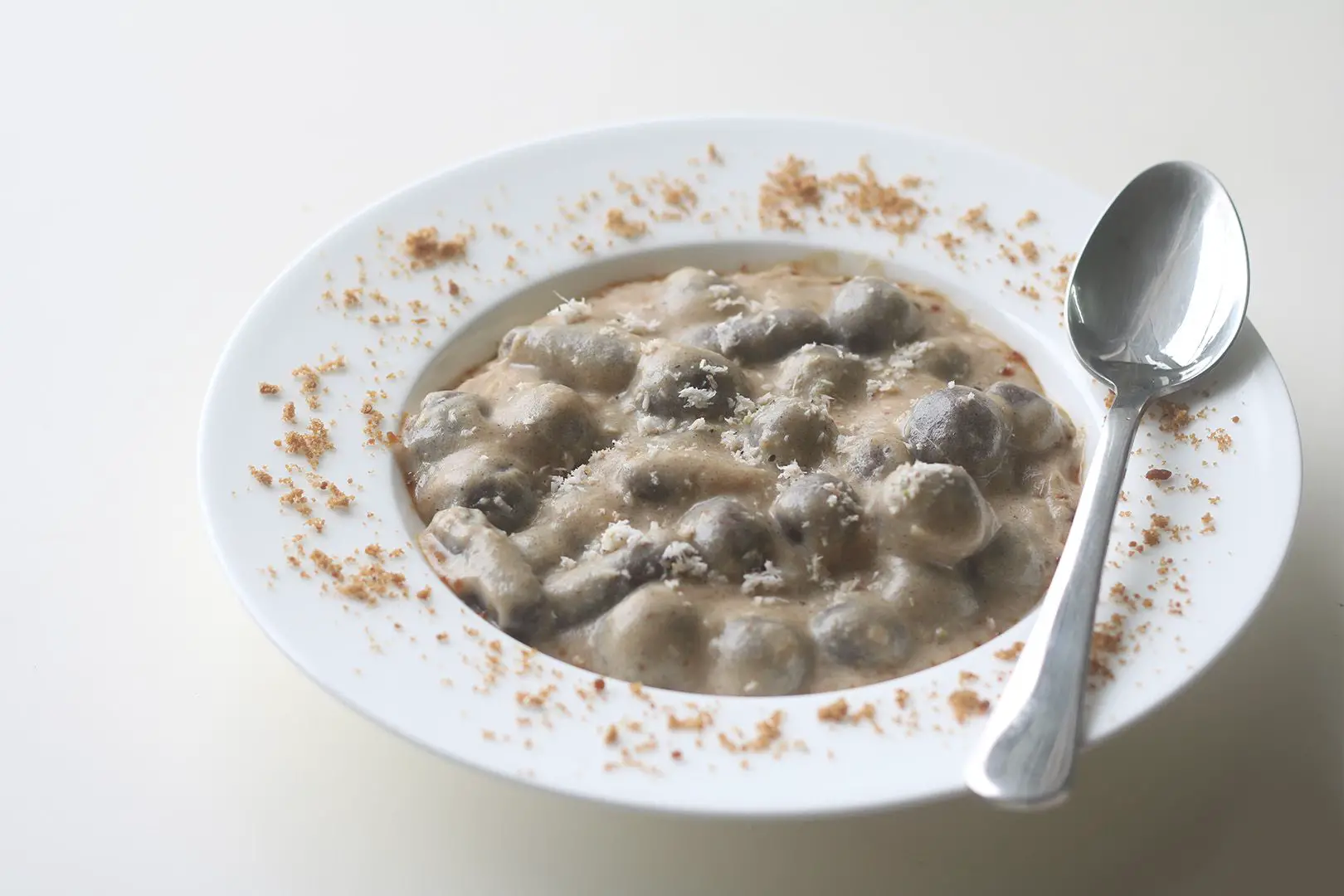
ragi Paal Kozhukattai
Serves: 2
Prep Time: 20 minutes
Cook Time: 20 minutes
Total Time: 40 minutes
Ingredients
- 1 cup Ragi flour
- 1/4 teaspoon Salt
- 1 cup Hot boiling water
- 1 tsp (optional) Oil
- 1 cup Milk
- 1 cup Water
- 1/4 cup Chopped coconut
- 3 Cardamoms
- 1/3 cup or as needed Powdered jaggery
- A pinch Dry ginger powder
- 1 tsp Ghee
- 1 tbsp Rice flour
- 3 tbsp Water
- A pinch of Salt
Instructions
- Place the chopped coconut and cardamoms in the mixie jar and grind until coarsely.
- In a small bowl, mix together rice flour, water, and salt until combined and set aside for further use.
- In a bowl, add ragi flour, salt, and boiling water. Knead it with a spoon until you form a firm dough (Caution: The dough will be hot). Then add oil to the dough to prevent it from drying.
- After it cools down, roll the dough into small balls or cylinders and keep them aside.
- Add 2 glasses of water to the idli pot and bring it to a boil. Then place all the balls in an oil greased idli plate and steam the balls for 7 minutes or until cooked through and keep it aside.
- Meanwhile, heat a heavy-bottomed pan with 1 cup of water and 1 cup of milk and bring it to a boil. When the milk starts to boil, add the steamed ragi balls and cook for two more minutes.
- Then add powdered jaggery and mix well.
- Add rice sauce to the pan, stir continuously until it thickens, over low heat.
- Further, add ground coconut and cardamom mixture, ginger powder, and ghee.
- Finally, give a good stir until everything is mixed well and serve in bowls.
- Once it cools it becomes thick. If it becomes thick, then add some milk and adjust the sugar correspondingly.
You may also like my other kozhukattai recipes Paal Kozhukattai, Dry Fruits Kozhukattai and Poornam Kozhukattai.
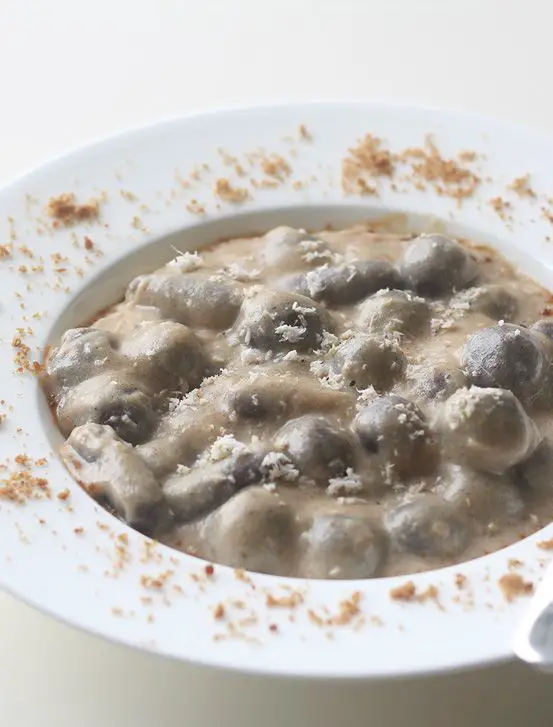
Step-By-Step Instructions:
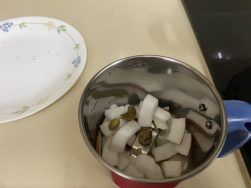
Firstly, place the chopped coconut and cardamoms in the mixie jar
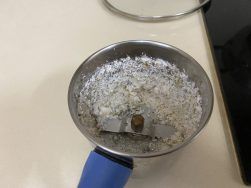
and grind until coarsely.
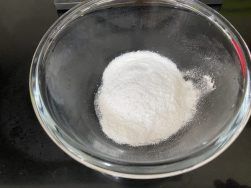
Then, in a small bowl, mix together rice flour, water and salt
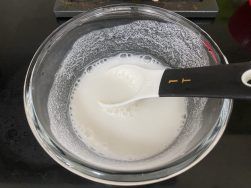
until combined and set aside for further use.
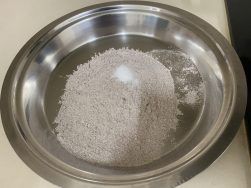
Finally, in a bowl, add ragi flour, salt,
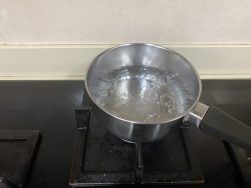
and boiling water.
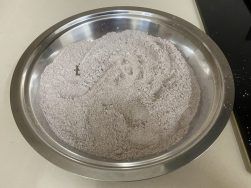
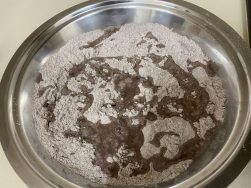
Knead it with a spoon until you form a firm dough (Caution: The dough will be hot).
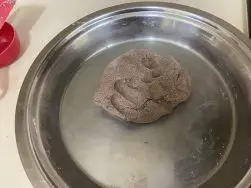
Then add oil to the dough to prevent it from drying.
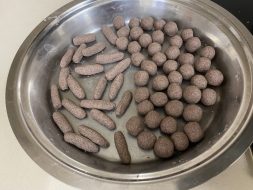
After it cools down, rolls the dough into small balls or cylinders and keep them aside.
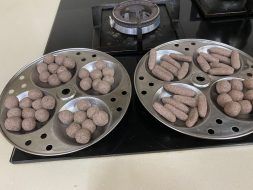
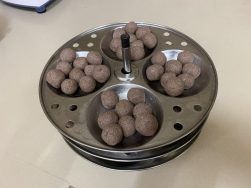
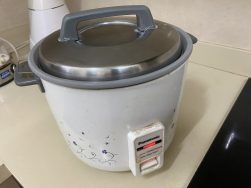
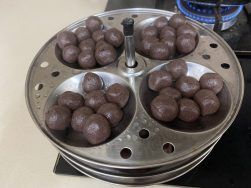
Add 2 glasses of water to the idli pot and bring it to a boil. Then place all the
balls in an oil greased idli plate and steam the balls for 7 minutes or
until cooked through and keep them aside.
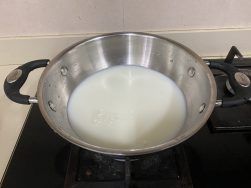
Meanwhile, heat a heavy-bottomed pan with 1 cup of water and 1 cup of milk
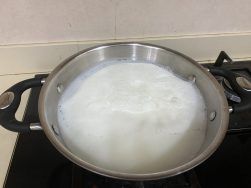
and bring it to a boil.
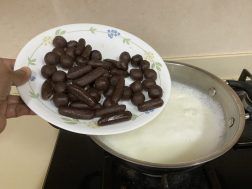
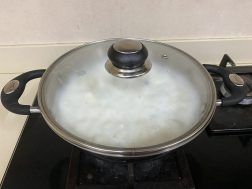
When the milk starts to boil, add the steamed ragi balls and cook for
two more minutes.
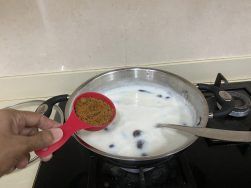
Then add powdered jaggery and mix well.
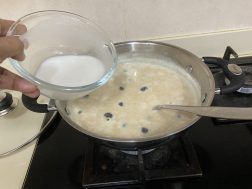
Then add rice sauce to the pan,
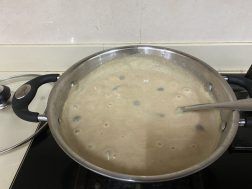
stir continuously until it thickens, over low heat.
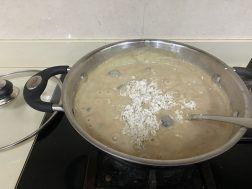
Further, add ground coconut and cardamom mixture,
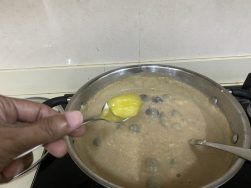
1 tsp of ghee
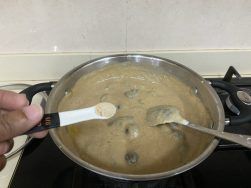
and dry ginger powder. Finally, give a good stir until everything is
mixed well and serve in bowls.
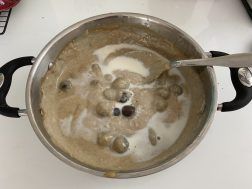
Once it cools it becomes thick. If it becomes thick, then add some milk
and adjust the sugar correspondingly.

